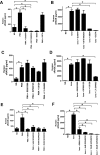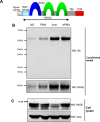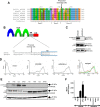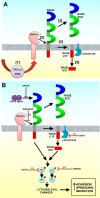Regulation of Receptor for Advanced Glycation End Products (RAGE) Ectodomain Shedding and Its Role in Cell Function
- PMID: 27022018
- PMCID: PMC4933258
- DOI: 10.1074/jbc.M115.702399
Regulation of Receptor for Advanced Glycation End Products (RAGE) Ectodomain Shedding and Its Role in Cell Function
Abstract
The receptor for advanced glycation end products (RAGE) is a multiligand transmembrane receptor that can undergo proteolysis at the cell surface to release a soluble ectodomain. Here we observed that ectodomain shedding of RAGE is critical for its role in regulating signaling and cellular function. Ectodomain shedding of both human and mouse RAGE was dependent on ADAM10 activity and induced with chemical activators of shedding (ionomycin, phorbol 12-myristate 13-acetate, and 4-aminophenylmercuric acetate) and endogenous stimuli (serum and RAGE ligands). Ectopic expression of the splice variant of RAGE (RAGE splice variant 4), which is resistant to ectodomain shedding, inhibited RAGE ligand dependent cell signaling, actin cytoskeleton reorganization, cell spreading, and cell migration. We found that blockade of RAGE ligand signaling with soluble RAGE or inhibitors of MAPK or PI3K blocked RAGE-dependent cell migration but did not affect RAGE splice variant 4 cell migration. We finally demonstrated that RAGE function is dependent on secretase activity as ADAM10 and γ-secretase inhibitors blocked RAGE ligand-mediated cell migration. Together, our data suggest that proteolysis of RAGE is critical to mediate signaling and cell function and may therefore emerge as a novel therapeutic target for RAGE-dependent disease states.
Keywords: ADAM; S100 proteins; cell migration; cell signaling; ectodomain shedding; matrix metalloproteinase (MMP); receptor for advanced glycation end products (RAGE).
© 2016 by The American Society for Biochemistry and Molecular Biology, Inc.
Figures









Similar articles
-
Receptor for advanced glycation end products is subjected to protein ectodomain shedding by metalloproteinases.J Biol Chem. 2008 Dec 19;283(51):35507-16. doi: 10.1074/jbc.M806948200. Epub 2008 Oct 24. J Biol Chem. 2008. PMID: 18952609
-
JNK and ATF4 as two important platforms for tumor necrosis factor-α-stimulated shedding of receptor for advanced glycation end products.FASEB J. 2019 Mar;33(3):3575-3589. doi: 10.1096/fj.201701553RR. Epub 2018 Nov 19. FASEB J. 2019. PMID: 30452882
-
AKT activation triggers Rab14-mediated ADAM10 translocation to the cell surface in human aortic endothelial cells.Sci Rep. 2025 Mar 3;15(1):7448. doi: 10.1038/s41598-025-90624-w. Sci Rep. 2025. PMID: 40032916 Free PMC article.
-
Ectodomain shedding of the receptor for advanced glycation end products: a novel therapeutic target for Alzheimer's disease.Cell Mol Life Sci. 2009 Dec;66(24):3923-35. doi: 10.1007/s00018-009-0121-4. Cell Mol Life Sci. 2009. PMID: 19672558 Free PMC article. Review.
-
Glycation reaction and the role of the receptor for advanced glycation end-products in immunity and social behavior.Glycoconj J. 2021 Jun;38(3):303-310. doi: 10.1007/s10719-020-09956-6. Epub 2020 Oct 27. Glycoconj J. 2021. PMID: 33108607 Review.
Cited by
-
MMP9/RAGE pathway overactivation mediates redox dysregulation and neuroinflammation, leading to inhibitory/excitatory imbalance: a reverse translation study in schizophrenia patients.Mol Psychiatry. 2020 Nov;25(11):2889-2904. doi: 10.1038/s41380-019-0393-5. Epub 2019 Mar 25. Mol Psychiatry. 2020. PMID: 30911107 Free PMC article.
-
Intranasal Delivery of Metabolically Resilient Glutathione: In Vivo Pharmacokinetic, Permeation, and Efficacy Studies.Mol Pharm. 2025 Jul 7;22(7):4145-4157. doi: 10.1021/acs.molpharmaceut.5c00382. Epub 2025 May 22. Mol Pharm. 2025. PMID: 40401709
-
RAGE inhibitor TTP488 (Azeliragon) suppresses metastasis in triple-negative breast cancer.NPJ Breast Cancer. 2023 Jul 13;9(1):59. doi: 10.1038/s41523-023-00564-9. NPJ Breast Cancer. 2023. PMID: 37443146 Free PMC article.
-
Mouse Specific Cleavage-Resistant RAGE Splice Variant.PLoS One. 2016 Sep 21;11(9):e0162120. doi: 10.1371/journal.pone.0162120. eCollection 2016. PLoS One. 2016. PMID: 27653772 Free PMC article. No abstract available.
-
Role and Therapeutic Potential of RAGE Signaling in Neurodegeneration.Curr Drug Targets. 2022;23(12):1191-1209. doi: 10.2174/1389450123666220610171005. Curr Drug Targets. 2022. PMID: 35702767 Free PMC article.
References
-
- Kalea A. Z., Schmidt A. M., and Hudson B. I. (2009) RAGE: a novel biological and genetic marker for vascular disease. Clin. Sci. 116, 621–637 - PubMed
-
- Taguchi A., Blood D. C., del Toro G., Canet A., Lee D. C., Qu W., Tanji N., Lu Y., Lalla E., Fu C., Hofmann M. A., Kislinger T., Ingram M., Lu A., Tanaka H., et al. (2000) Blockage of RAGE-amphoterin signalling suppresses tumour growth and metastases. Nature 405, 354–360 - PubMed
-
- Hudson B. I., Kalea A. Z., Del Mar Arriero M., Harja E., Boulanger E., D'Agati V., and Schmidt A. M. (2008) Interaction of the RAGE cytoplasmic domain with diaphanous-1 is required for ligand-stimulated cellular migration through activation of Rac1 and Cdc42. J. Biol. Chem. 283, 34457–34468 - PMC - PubMed
-
- Logsdon C. D., Fuentes M. K., Huang E. H., and Arumugam T. (2007) RAGE and RAGE ligands in cancer. Curr. Mol. Med. 7, 777–789 - PubMed
Publication types
MeSH terms
Substances
LinkOut - more resources
Full Text Sources
Other Literature Sources
Molecular Biology Databases

